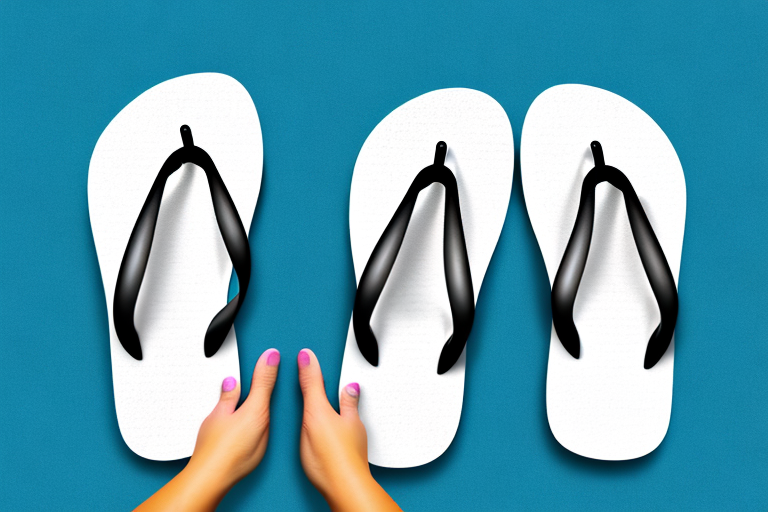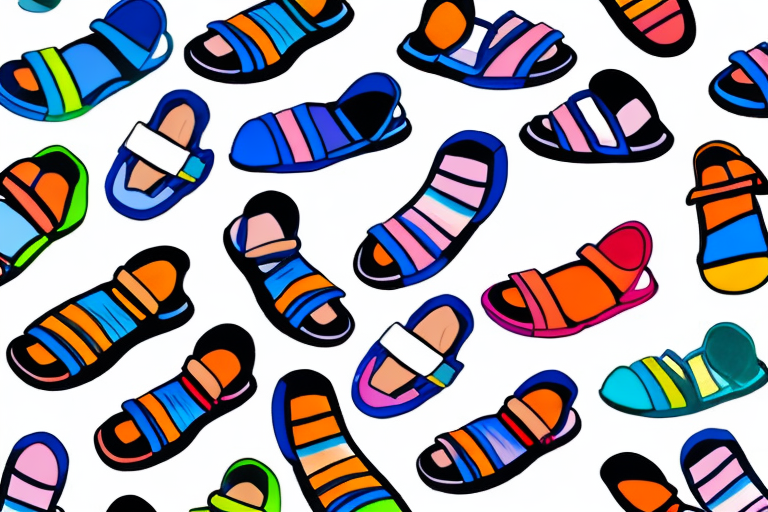Sandals with straps offer a fashionable and comfortable way to kick around on a sunny day. Unfortunately, if you don’t take the right precautions, the straps could also be a source of painful blisters. To prevent blisters when wearing sandals with straps, there are a few things to keep in mind.
Choosing the Right Sandal for Your Feet
Choosing the right sandal for your feet is key to minimizing the risk of getting a blister. The best sandal for your feet will be one with straps that are snug—but not too tight—and rich materials that are not prone to chafing. When trying on sandals with straps, walk around and make sure that the straps do not rub or pinch your skin. Many retailers will let you return sandals that don’t fit properly, so don’t be afraid to shop around until you find the perfect fit.
Preparing Your Feet for Wearing Strapped Sandals
Once you’ve found your perfect sandal, it’s important to prepare your feet before you put them on. Start by giving your feet a scrub with a gentle foot soap or scrub. This will help remove any dead skin cells or debris that could cause chafing or blisters. Additionally, it’s smart to apply a layer of petroleum jelly or other lubricant to areas prone to friction, such as your heels or toes, to reduce the chance of blisters forming.
The Benefits of Wearing Strapped Sandals
Along with looking stylish, there are plenty of benefits to wearing sandals with straps. Unlike flip flops, the straps will help keep the sandals securely on your feet which can reduce the risk of falling and risking an injury. Strapped sandals can also provide extra cushioning and support, while remaining lightweight and breathable.
Tips for Keeping Your Feet Comfortable
To keep your feet comfortable while wearing strappy sandals, there are several helpful tips. For example, you can wear an absorbent material sock that won’t bunch up your sandals and will soak up any sweat your body produces. This can help reduce chafing. Additionally, if you find that the strap of your sandals are rubbing against certain areas of your feet, you can place a band-aid or moleskin over the site for additional layers of protection.
How to Lace the Straps on Your Sandals
To ensure that your sandals are comfortable and secure, you need to make sure that you lace up the straps correctly. You don’t want the straps to be too loose or too tight—so it’s important to find a balance. Start by gently pulling the straps together and thread them together on the sides of your foot. Once the straps are threaded, move up the side of your foot, pulling gently until the straps are comfortably tight without pinching any skin.
What to Do if You Get a Blister
If you get a blister while wearing a sandal with straps, it’s important to properly treat it. Start by rinsing the area with warm water and soap. Allow the area to air dry before applying neosporin or an antibiotic ointment. For additional protection and comfort, cover the area with a band-aid or moleskin and avoid sandals with straps for a few days afterwards.
Recommended Foot Care Products for Sandal Wearers
When wearing strapppy sandals, it’s important to invest in quality foot care products. This includes a good foot soap, plenty of petroleum jelly, band-aids, moleskin, and an antibiotic ointment. The foot care products can also be used if you develop any sores or wounds while wearing strappy sandals. As an added benefit, these products can also make walking in heels more comfortable.
Other Ways to Prevent Blisters with Sandals
In addition to preparing your feet prior to wearing strappy sandals, there are several other things that you can do to prevent blisters from forming. For example, avoid walking long distances in sandals with straps or running in them, as this can cause friction and unwanted pain. Another great way to prevent blisters is by taking regular breaks throughout the day. Taking a few minutes to switch up your sandal style by walking barefoot can give your skin a break from rubbing against the strap.
When Should You Seek Professional Help?
In some cases, if you suffer from chronic blisters while wearing sandals with straps, you may need to seek professional help. Your doctor may suggest treatments such as topical medications or special padding for the straps to provide extra cushioning. In more severe cases, surgery may be needed. Consulting with a healthcare professional is the best choice when dealing with serious cases of blisters.
By following all of these tips, you can enjoy wearing sandals with straps without worrying about getting painful blisters. Choosing quality sandals that fit correctly, preparing your feet before putting them on, and investing in quality foot care products can help ensure that your feet stay comfortable and blister free.



